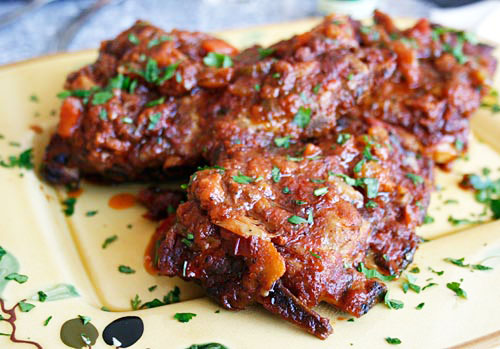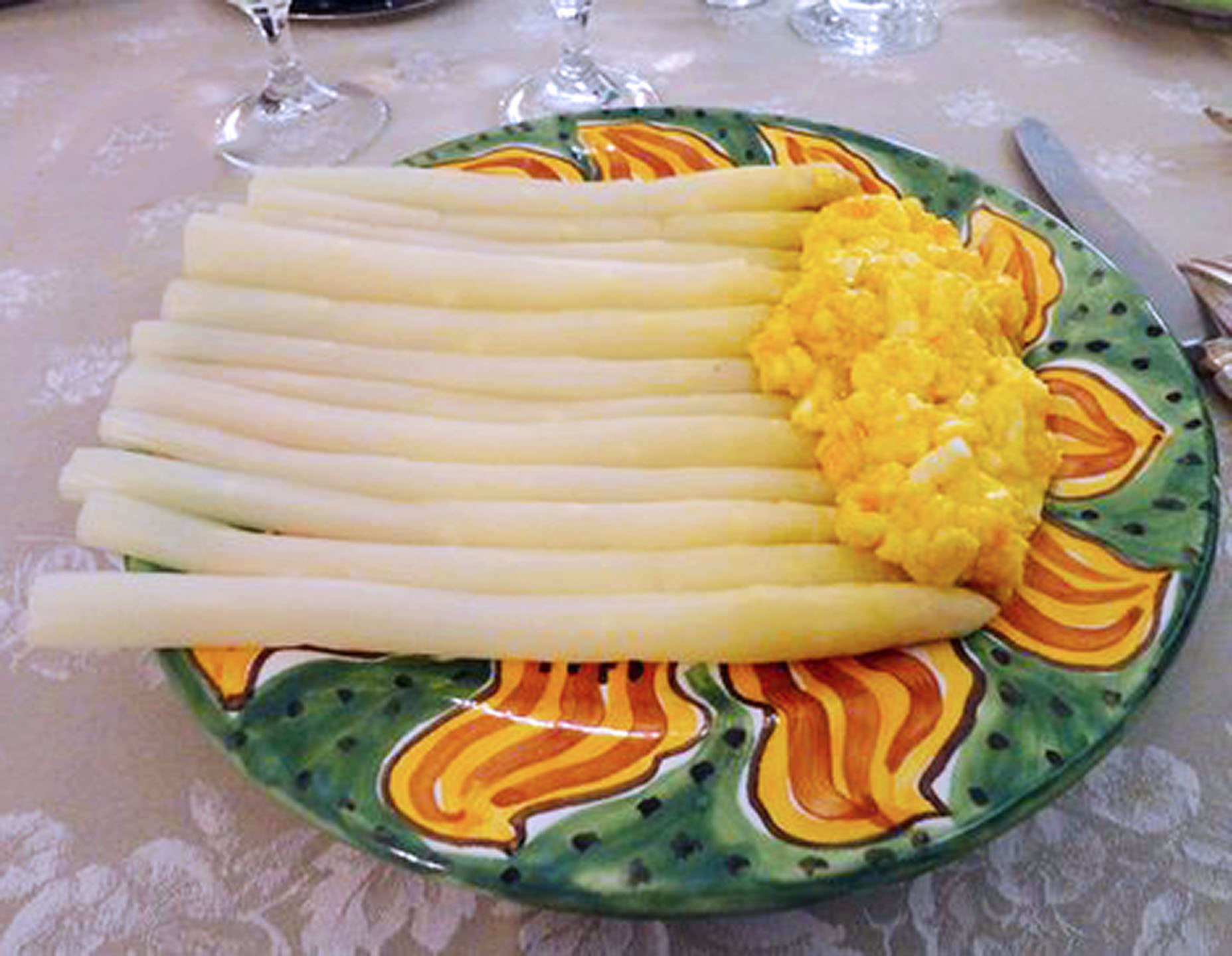Among the most famous specialties of Vibo Valentia is its famous ‘Nduja, a spicy pork sausage. It is unusual in its flavor and its consistency, which is soft enough to be spread onto bread. Reddish in color, due to the hot peppers in the mixture, ‘Nduja is also used in spicy pasta sauces. Locals swear that the sausage also helps their cardiovascular system, besides being delicious and flavorful.
One of the signature spirts of the region of Calabria is Vecchio Amaro del Capo. Twenty nine herbs, flowers, fruits and roots are combined in a secret recipe to create this liqueur. Vecchio Amaro del Capo should always be served chilled. At a temperature of -4°F, the mint, aniseed and licorice emerge in all their strength, while the herbs create a fresh and seductive flavor.
Another liqueur from the area is Bergamotto. Based on a recipe from the 1850s, it was known in Italy as ‘Aperitivo di Corte’ – the Aperitif of the Court, or loosely translated as the drink of kings. It is made from Calabrese bergamot and selected native Italian botanicals. It is lightly citrusy on the nose with hints of rose and lavender. To enhance the delicate flavors of the flowers, Bergamotto is often enjoyed 50/50 with prosecco over ice and garnished with three green olives to balance the floral aromas with a touch of saltiness.
One of the most distinctive cheeses of Vibo Valentia is caciocavallo, which literally means “horse cheese.” The cheese is made from cow’s milk and the name is thought to be based on how the cheese is made. Traditionally, two cheese forms are tied together and hung, a cavallo (on horseback), straddling wooden beams to mature for at least 30 days. The rind of caciocavallo is smooth, thin, pale yellow and it becomes more intense during the seasoning. After a month’s time, the cheese assumes a more intense flavor, the typical holes appear and the taste becomes notably spicier.
Calabrian Style Pork Ribs
Calabrians preserve many of their vegetables in oil to be used throughout the year and this recipe uses some of those veggies in a tasty sauce for ribs. These Calabrian pork ribs can be made as spicy as you prefer. Leave plenty of time for cooking – the key is to slow roast the ribs, especially if cooking on the grill. It makes the meat so tender, it falls right off the bone.
Ingredients
- 2 cups canned, chopped tomatoes
- ½ cup chopped fresh basil
- ½ cup mushrooms preserved in oil, finely chopped
- ½ cup artichokes preserved in oil, finely chopped
- ½ cup mixed hot vegetable antipasto, finely chopped (optional)
- 2 slabs lean pork ribs
- salt and pepper
Preparation
Preheat the oven to 300°F. Season the ribs both sides with salt and pepper. Place the ribs in a baking pan and cook for one hour.
Mix together the chopped vegetables with the tomatoes and basil. Pour the sauce over top of the ribs. Cover and bake for another hour at 300°F. Uncover, reduce the heat to 250°F and cook another hour, turning the ribs over once during this time and basting them with the sauce. If the sauce gets too thick while cooking, add ½ cup of water and mix this into the sauce. To serve, cut the ribs into pieces, with the sauce spooned on top.
Tropea Onion Jam
This recipe uses the sweet red onion of Tropea. A lot of people buy the onion seeds and plant them in their gardens (growing time – 110 days). Serve this jam alongside a wedge of creamy Gorgonzola Dolce cheese and some crusty bread.
Ingredients
- 1 lb Tropea onions, chopped
- 2 cups sugar
- 1 cup Sangiovese red wine
- ½ tsp sea salt
- 10 whole peppercorns
- 1 whole clove
- 1 bay leaf
- 1” piece vanilla bean
- ½ cinnamon stick
- 2 tbsp. red wine vinegar
Preparation
Combine the onions, sugar and wine and pour into a heavy bottomed saucepan. Create a sachet using cheesecloth to hold the peppercorns, clove, bay leaf, vanilla bean and cinnamon stick. Tie securely with kitchen string.
Add the sachet to the saucepan and cook over a medium high flame until the mixture reaches 225°F, or until the mixture thickens. Add the vinegar to the jam and stir. Ladle the jam into hot, sterilized jars leaving a ¼” at the top. Wipe the rims with a warm, clean cloth and secure the lids firmly. Place the jars in a boiling water bath for 10 minutes. Make sure the water is deep enough to cover the lids by 1”. Remove the jars from the water and allow to cool to room temperature. Store in a cool dark place before using.
Mostaccioli Cookies
One of the oldest cookies recipes of all. This recipe uses chocolate, but in Calabria there are hundreds of recipes for this delicious cookie.
Ingredients
- 2 eggs
- 1 1/4 cups sugar
- 3/4 cup heavy cream
- ½ cup extra virgin olive oil
- 2 tbsp baking powder
- 1 ½ tsp ground clove
- ½ tsp cinnamon
- 1/4 tsp nutmeg
- 1 ½ tsp salt
- 8 tbsp cocoa powder
- 2 tsp vanilla extract
- 4 cups all-purpose flour
- ½ cups toasted walnuts
- 1 3/4 cups mini chocolate chips
For the glaze
- 1 cup semi-sweet chocolate
- 3 tbsp heavy cream
- pinch of salt
Preparation
Preheat the oven to 300°F. In a large mixing bowl, vigorously mix all ingredients, less the flour, nuts and chocolate chips. Slowly add flour to form a cookie dough. Once the dough is combined, mix in the walnuts and chocolate chips. Roll your dough into balls 1 ½” in diameter and place on a sheet tray. To keep them from rolling, carefully press the dough onto the sheet tray. Bake for 8 to 10 minutes, or until the cookies are just about to crack. Remove from the oven and place onto a cooling rack.
To glaze the cookies, melt the chocolate in a heatproof bowl and place it over a pan of simmering water (a double boiler). Whisk the chocolate until melted and smooth. Then whisk in the heavy cream and salt until the mixture is well combined and smooth. Dip the toe of your cookie into the glaze, then put it back on the cooling rack to dry completely, about 15 to 20 minutes.





